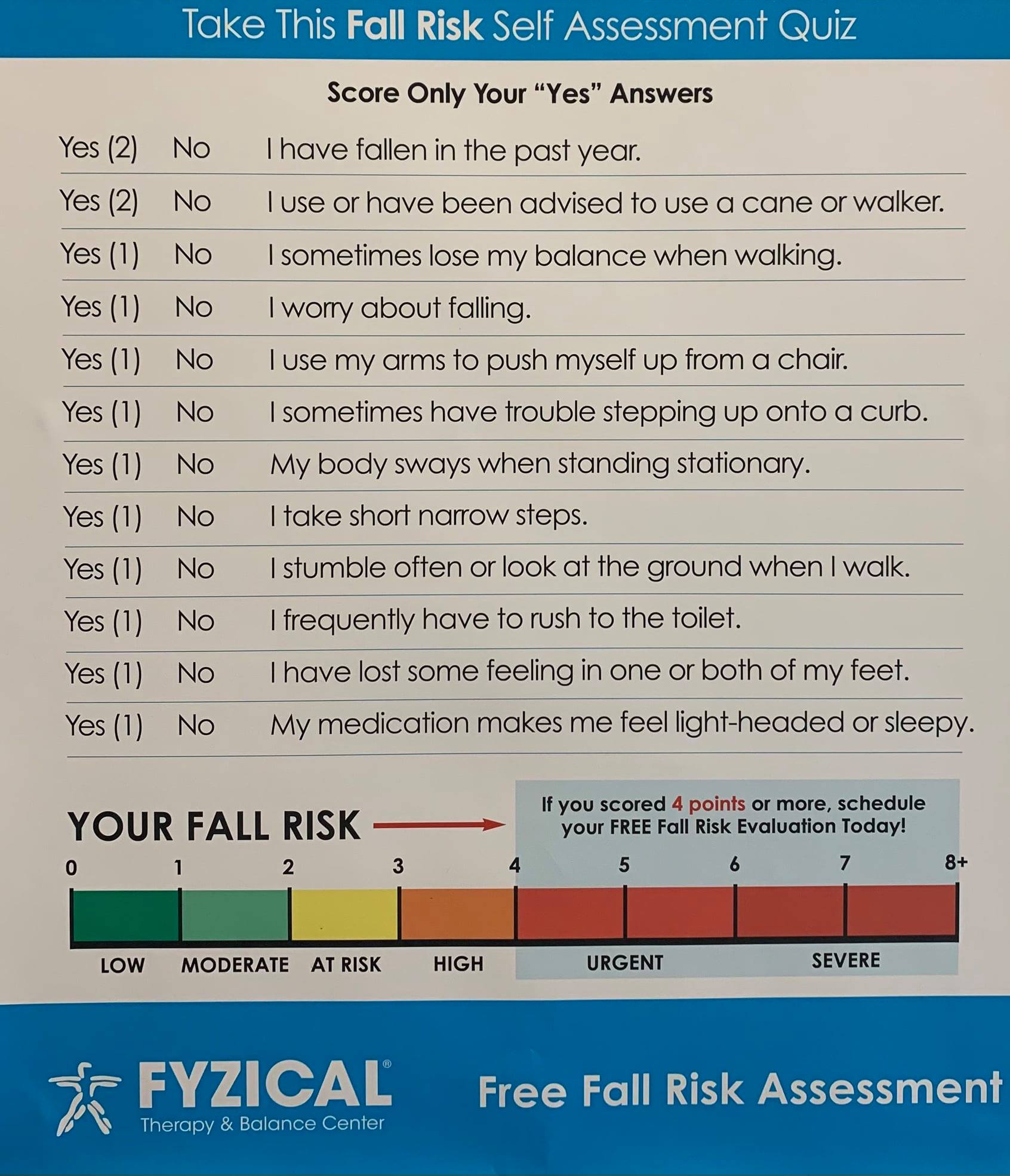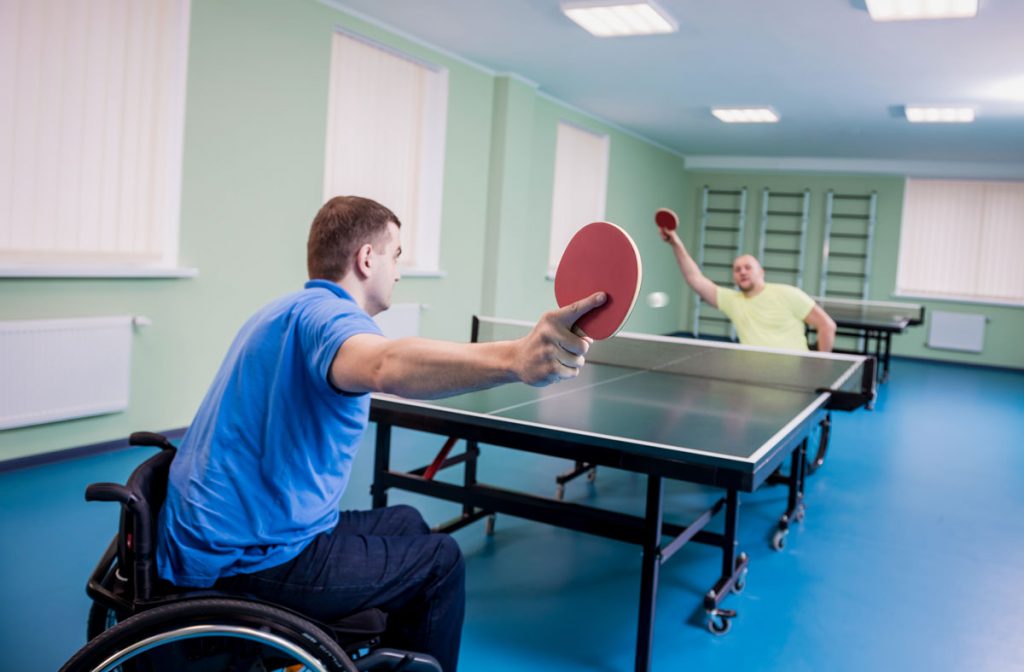The Of Dementia Fall Risk
The Of Dementia Fall Risk
Blog Article
An Unbiased View of Dementia Fall Risk
Table of ContentsSome Known Details About Dementia Fall Risk What Does Dementia Fall Risk Mean?Getting My Dementia Fall Risk To WorkIndicators on Dementia Fall Risk You Need To Know
A loss risk analysis checks to see how likely it is that you will certainly drop. The assessment generally includes: This consists of a series of concerns concerning your total health and if you have actually had previous drops or troubles with balance, standing, and/or walking.Treatments are referrals that might decrease your danger of falling. STEADI consists of 3 steps: you for your risk of falling for your risk factors that can be boosted to try to prevent drops (for instance, balance troubles, damaged vision) to minimize your threat of dropping by making use of reliable methods (for example, offering education and sources), you may be asked a number of inquiries consisting of: Have you fallen in the previous year? Are you stressed regarding falling?
You'll sit down once more. Your service provider will examine exactly how long it takes you to do this. If it takes you 12 seconds or more, it might mean you go to higher danger for an autumn. This test checks toughness and balance. You'll rest in a chair with your arms crossed over your upper body.
Move one foot midway onward, so the instep is touching the large toe of your other foot. Move one foot completely in front of the various other, so the toes are touching the heel of your various other foot.
The Ultimate Guide To Dementia Fall Risk
Most drops occur as an outcome of several contributing elements; for that reason, managing the risk of dropping starts with determining the aspects that add to fall risk - Dementia Fall Risk. Some of one of the most pertinent threat elements include: Background of prior fallsChronic medical conditionsAcute illnessImpaired stride and equilibrium, lower extremity weaknessCognitive impairmentChanges in visionCertain high-risk medicines and polypharmacyEnvironmental elements can additionally boost the danger for falls, including: Insufficient lightingUneven or damaged flooringWet or unsafe floorsMissing or harmed handrails and grab barsDamaged or poorly equipped devices, such as beds, wheelchairs, or walkersImproper use assistive devicesInadequate guidance of individuals living in the NF, consisting of those who exhibit hostile behaviorsA successful autumn danger management program calls for a detailed clinical evaluation, with input from all members of the interdisciplinary team

The treatment strategy ought to additionally include interventions that are system-based, such as those that promote a safe setting (ideal lights, handrails, get bars, etc). The efficiency of the interventions must be assessed periodically, and the treatment plan revised as necessary to reflect adjustments in the loss risk assessment. Carrying out a loss threat monitoring system making use of evidence-based ideal technique can reduce the frequency of falls in the NF, while limiting the capacity for fall-related injuries.
Some Known Details About Dementia Fall Risk
The AGS/BGS standard suggests screening all grownups aged 65 years and older for autumn danger yearly. This testing contains article source asking individuals whether they have actually dropped 2 or more times in the previous year or looked for medical attention for a fall, or, if they have actually not dropped, whether they feel unsteady when strolling.
People that have actually fallen when without injury must have their equilibrium and stride evaluated; those with gait or equilibrium problems need to obtain added analysis. A background of 1 loss without injury and without stride or equilibrium troubles does not necessitate more analysis past ongoing yearly autumn risk screening. Dementia Fall Risk. A loss risk assessment is needed as component of the Welcome to Medicare examination

Some Ideas on Dementia Fall Risk You Should Know
Documenting a drops background is one of the top quality signs for loss prevention and monitoring. Psychoactive medicines in particular are independent forecasters of falls.
Postural hypotension can commonly be relieved by decreasing the dose of blood pressurelowering drugs and/or stopping medicines that have orthostatic hypotension as a side effect. Usage of above-the-knee assistance hose pipe and resting with the head of the bed elevated might also lower postural decreases in high blood pressure. The suggested components of a fall-focused checkup are revealed in Box 1.

A pull time more than or equivalent to 12 secs recommends high fall threat. The 30-Second Chair click to find out more Stand examination analyzes reduced extremity strength and equilibrium. Being unable to stand from a chair of knee elevation without utilizing one's arms indicates increased fall threat. The 4-Stage Equilibrium test analyzes fixed balance by having the patient stand in 4 positions, each considerably a lot more challenging.
Report this page